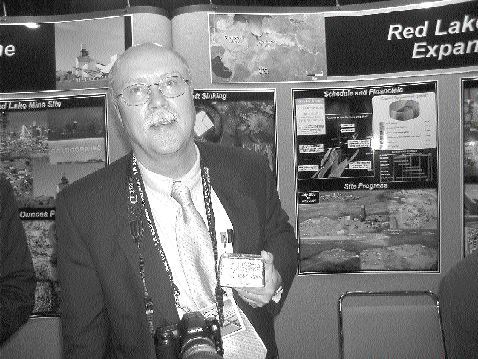The list of ore-grade intersections is phenomenal. Approximately 500 ft. below the lowest working level at the mine, in the High Grade zone (HGZ) extension hangingwall, crews intersected 19.2 ft. grading 7.76 oz. gold per ton. Another 200 ft. below this level, a hole intersected 6 ft. of 5.26 oz. gold. At 6,750 ft. below surface (1,250 ft. below the mine workings), this same zone was intersected, grading 2.18 oz. over 70 ft.
The HGZ extension footwall zone was intersected in 19 holes; the two highest intercepts were 4.31 oz. gold over 2 ft. and 2.96 oz. over 1 ft. Nine intersections graded 1.1-1.84 oz. gold per ton over widths of 2.7-15.2 ft.
The HGZ hangingwall zone has been consistently intersected to a depth of at least 7,700 ft. (2,200 ft. below the current mine workings). Resources are also being outlined in sulphide zones dubbed the Deep Extensions and Far East.
Sulphide mineralization in the Far East zone resulted in intersections of 4.5 ft. grading 6.55 oz. gold, as well as 5 ft. of 2.18 oz. gold. Other intercepts assayed 0.1-0.49 oz. over widths ranging from 2.4 to 12 ft.
The Far East zone has a current resource of 240,000 oz. gold (510,600 tons at a grade of 0.47 oz. gold per ton).
Sulphide mineralization in accessible, nearby extensions of previously mined ore has been intersected in 60 holes, with four holes grading 1.61-2.87 oz. gold over widths of 1-16 ft.; the rest of the holes intersected 0.12-0.97 oz. gold over widths of 1-45.9 ft.
A new shaft is currently over 1,000 ft. deep and should reach its projected depth of 7,150 ft. by late 2006. The expansion is expected to increase annual production to 700,000 oz. from the current 510,000 oz. At a gold price of US$400 per oz., the shaft is expected to have a 1.2-year payback period with an internal rate of return of 48%.
The mine poured its 5-millionth ounce of gold in early May, and reserves and resources are now estimated to exceed 6 million oz. Production last year totalled 532,028 oz.
Goldcorp is holding back 33% of its production from sale in the belief that the price of gold will rise significantly. The company expects to have a gold inventory of 200,000 oz. by the end of 2004. A similar strategy paid off for Goldcorp in 2003, when the company sold almost 143,000 oz. at a premium of $72 per oz. over the amount it would have made if the gold had been sold at the time of production. The sale contributed $10 million to 2003 revenue.
At the Goldcorp annual general meeting Chairman Robert McEwan commented on the company’s strategy: “We are not going to be infallible, but we are going to be conservative in our financial approach and aggressive when the opportunity is there in front of us.”
During the Q&A session, a member of the audience asked: “If Goldcorp is so good, why do we have to advertise so much?”
McEwan’s response: “Well, 99% of the people who invest in the market have no exposure to gold, and a large percentage of that group has never thought about or even considered buying gold. . . . We want to improve our liquidity. We want to lower our costs to capital. We want to implore people to consider gold as a way of protecting their assets.”
Responding to another question, McEwan suggested Goldcorp’s share price should increase as a result of exploration work aimed at expanding the Red Lake orebody. “We expect to increase production at Red Lake by forty per cent and further lower our costs below eighty dollars an ounce down to about seventy dollars an ounce. We are also looking to form joint ventures with juniors.”
At the Goldcorp reception following the meeting, joint venture partners
Goldcorp has been testing new technology designed to ensure environmental protection. One such process used to treat water and recover metal was patented by environmental firm
Goldcorp intends to close the Wharf mine in South Dakota by early 2007. The mine is expected to produce 70,000 oz. gold per year until then. Total costs at the operation are estimated to be US$325 per oz. in 2004. Reclamation is already in progress.
The company is debt-free and, at the end of 2003, had almost $410 million in its treasury.
Goldcorp shares are down 25% from the end of 2003, despite a 19% production increase and a 22% rise in earnings in the recent first quarter, compared with the corresponding period of 2003. The company began paying a dividend in 2001; this year, the dividend is expected to be 18 per share.
At the end of 2003, Goldcorp had 183.5 million shares outstanding, or 188 million on a fully diluted basis.


Be the first to comment on "Bonanza grades at Red Lake mine"